
Supercharge your lead generation with a FREE Google Ads audit - no strings attached! See how you can generate more and higher quality leads
Get My Free Google Ads AuditFree consultation

No commitment
Supercharge your lead generation with a FREE Google Ads audit - no strings attached! See how you can generate more and higher quality leads
Get My Free Google Ads AuditFree consultation

No commitment
In today's rapidly evolving marketing landscape, it's crucial for hair care businesses to seamlessly integrate both online and offline channels. Google Ads occupies a pivotal role, enabling brands to intercept potential clients precisely when they're searching for hair care solutions. This approach bridges the gap between broad marketing activities and focused sales efforts. High-value prospects can be missed if they aren't effectively tracked, leading to lost opportunities, particularly in competitive hair care markets. By ensuring ad spend targets real decision-makers, businesses can capture:
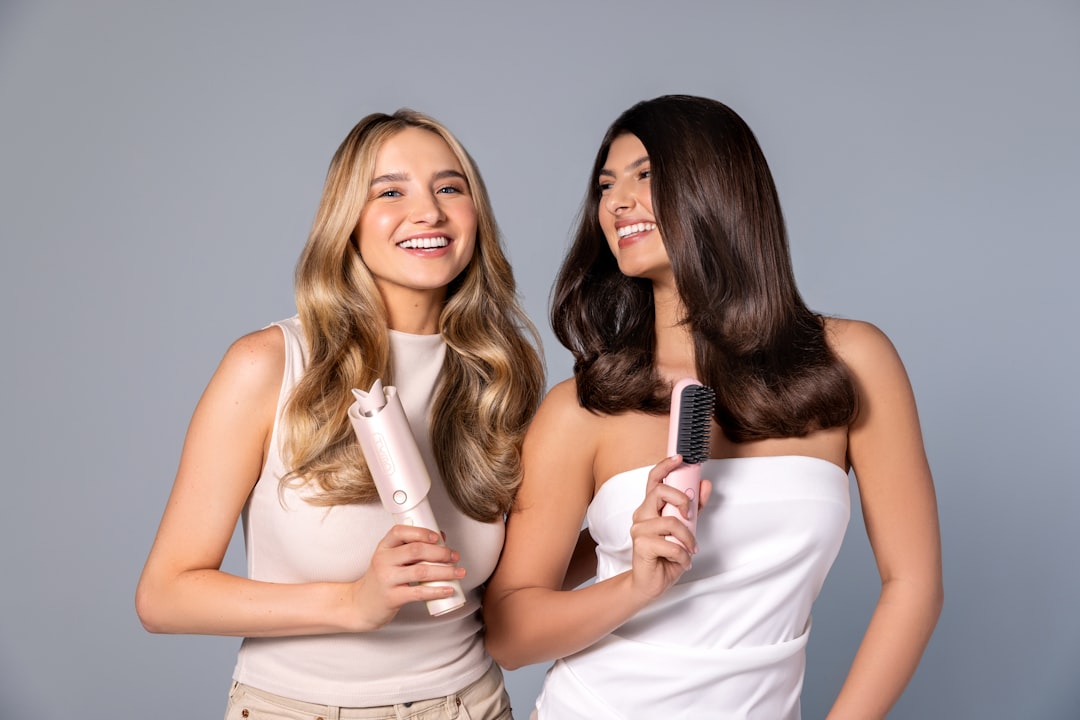
Modern hair care brands and salons operate in an environment where rapid lead capture is critical. The ability to engage buyers at the earliest sign of intent gives marketers a powerful edge in a crowded digital landscape.
By implementing a structured Google Ads strategy, salons, product brands, and digital marketers can efficiently convert high-value prospects before competitors intervene. Leveraging real-time behavioral signals, marketers can optimize campaigns to reach motivated buyers and accelerate revenue growth.
This holistic framework is designed for salon owners, marketers, and product brands seeking to drive qualified leads, maximize advertising ROI, and accelerate growth in a highly competitive industry.

Hair care brands and salon suppliers operate in a landscape where capturing the attention of stylists, salon owners, and beauty influencers is highly time-sensitive. Google Ads enables these businesses to reach decision-makers exactly when they are searching for specific products or services, especially during launches or time-limited promotions. Hair salon Google Ads provides a deeper look at how timing impacts campaign results in the beauty industry.
For high-margin services like advanced hairstyling, luxury treatments, or premium product kits, Google Ads delivers immediate visibility to audiences most likely to convert. The platform's ability to drive traffic during key promotional windows ensures that marketing budgets are allocated where they create the most impact. Emerging brands can also boost their presence in untapped regional markets or target urban centers where demand for innovative hair care is rapidly growing.
Modern ad management solutions now provide a transparent view into which companies are engaging with your ads. Platforms like Sona ID are designed to help brands identify high-value visitors from ad campaigns and prioritize follow-up based on real engagement, maximizing the business potential of every click. Closed-loop analytics link ad spend to real pipeline outcomes, informing broader campaign strategy and helping teams invest in tactics proven to drive measurable ROI.

Brands in the hair care industry need to move beyond broad, generic campaigns to achieve measurable growth and stronger customer acquisition. Highly segmented Google Ads strategies let companies tailor messaging and creative to each stage of the buyer journey, driving better engagement and higher returns.
Successful hair care advertising relies on mapping creative and messaging across all these formats to address each buyer’s needs at the right time. Hair Care ROAS Benchmarks shares industry benchmarks for Google Ads ROI in the hair care category. By leveraging unified data and dynamic audience management, brands achieve higher engagement, more efficient spend, and a measurable boost in ROI.

Expanding reach in the hair care market demands a methodical approach to both targeting and campaign structure. Teams that identify untapped search intent and align their strategies across channels consistently outperform reactive advertisers. By combining granular keyword research with audience insights, marketers can accelerate growth and minimize wasted spend.
Disconnected campaigns and generic audience buckets often result in inefficient spend and missed opportunities. By unifying intent data, dynamic audience updates, and cross-channel attribution, hair care brands and salons can seize growth opportunities with greater precision and impact. To get started with smarter segmentation and intent-driven targeting, begin your onboarding with Sona Onboarding.
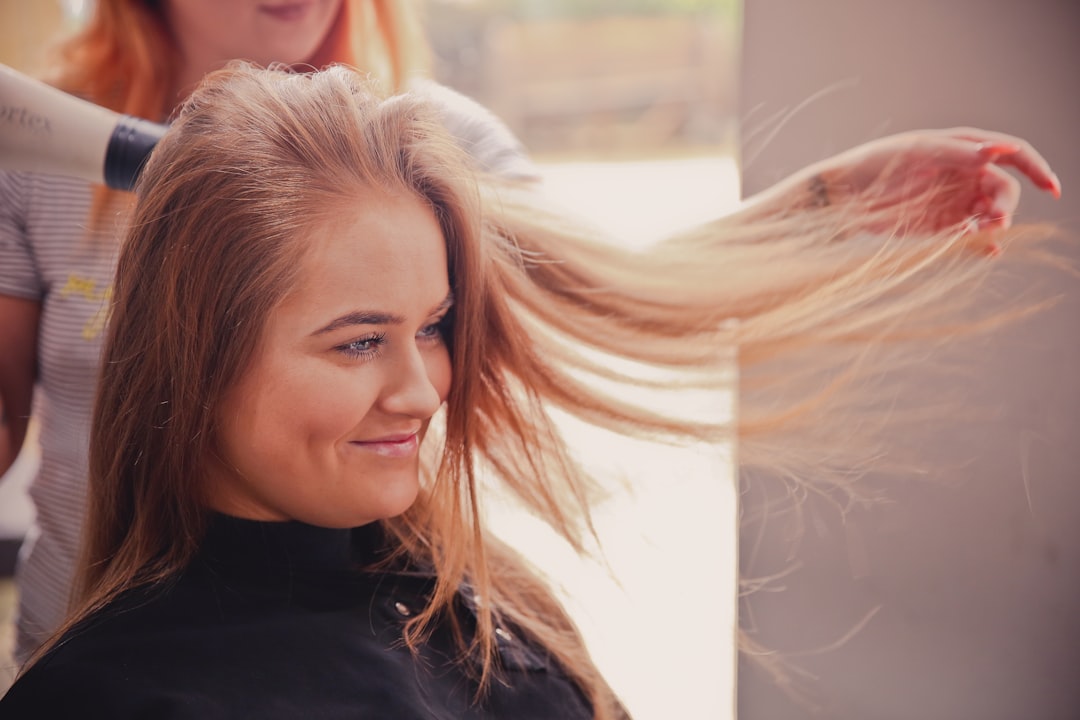
Highly targeted audience segmentation is critical to maximize ROI and relevance in digital marketing for hair care. Modern brands and salons need to deliver messaging that aligns precisely with each customer's journey stage, avoiding generic campaigns that fail to address unique needs. Leveraging segmentation allows for personalized engagement that builds trust and accelerates conversions.
Defining clear customer segments improves campaign efficiency and message precision. For the hair care industry, segments often include salon visitors seeking local services and online product shoppers browsing for hair treatments or styling solutions. By analyzing behaviors such as appointment bookings, repeat visits, or online shopping cart activity, marketers can distinguish between these groups and craft tailored messaging for each segment. Haircare marketing strategies provides a deeper look at proven segmentation strategies in the sector.
Intent signals are powerful indicators for optimizing PPC for hair salons and hair care advertising. Users searching for "new hairstyle inspiration" or "best anti-frizz treatment" demonstrate different needs and conversion potential. Real-time monitoring of these signals ensures that ad spend is allocated to audiences most likely to convert. Solutions such as Sona Signals support the identification and prioritization of high-value intent, enabling marketers to shift budget dynamically toward high-converting accounts.
Creating ad groups that align with each audience segment is essential for message consistency. Hair salon marketing campaigns can be structured so that each group receives creative and offers relevant to their journey—local customers might see promotions for in-salon treatments, while online shoppers are presented with limited-time product bundles. Dynamic audiences that update as leads move from awareness to purchase enable ongoing campaign optimization and prevent wasted impressions.
Seamless conversion tracking, integrated with your CRM, ensures that every click and offline interaction is accounted for. For more insights on tracking and attribution best practices, check out our guide on self-reported attribution. By syncing enriched audience data and conversion events directly from your CRM to Google Ads and platforms like HubSpot or Salesforce, you achieve a unified view of the customer journey. This level of tracking not only measures true ROI for hair care PPC campaigns but also reveals which segments and touchpoints drive the most revenue, fueling more precise, data-driven marketing decisions for future campaigns.
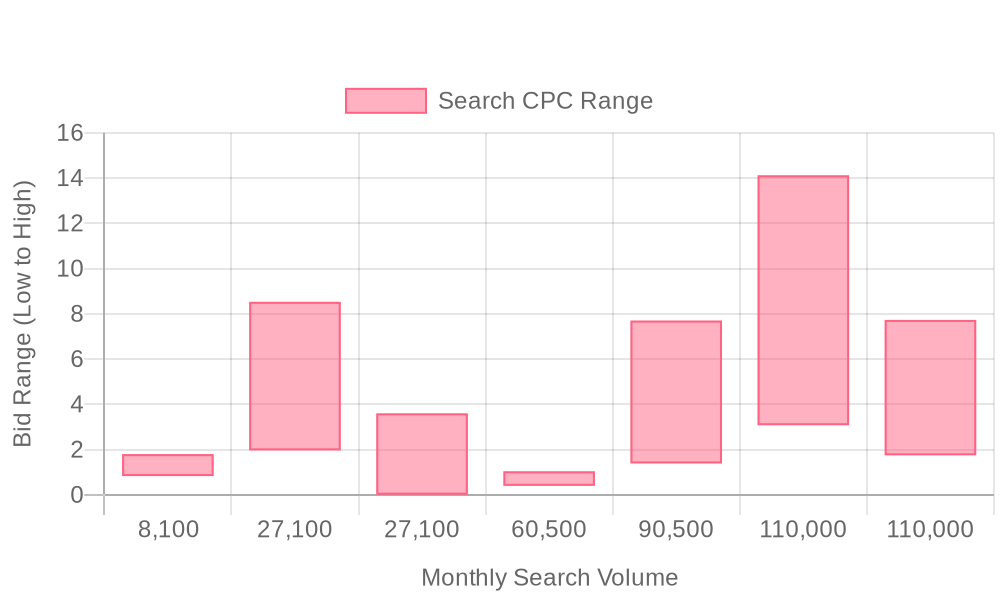
| Industry | Keyword | Monthly Search Volume | Competition Level | Low Bid | High Bid |
| Hair Care | virtue hair products | 8100 | HIGH | 0.83 | 1.8 |
| Hair Care | hair care | 27100 | HIGH | 1.97 | 8.53 |
| Hair Care | prose hair | 27100 | HIGH | 0.01 | 3.6 |
| Hair Care | wow hair products | 60500 | HIGH | 0.4 | 1.04 |
| Hair Care | curly hair products | 90500 | HIGH | 1.39 | 7.7 |
| Hair Care | hair loss treatment | 110000 | LOW | 3.08 | 14.12 |
| Hair Care | hair growth products | 110000 | HIGH | 1.75 | 7.73 |
Capturing in-market buyers for hair care solutions requires a nuanced keyword approach that reaches prospects with strong purchase intent. By focusing campaigns on precise, lower-funnel terms, brands can connect with individuals actively seeking hair care products and services, reducing wasted ad spend and improving lead quality.
Smart bidding, fueled by unified audience data and advanced conversion tracking, ensures each click is evaluated for potential value. As leads progress through the funnel, audience segments refresh automatically, allowing marketers to retarget and nurture prospects with tailored offers. For more insights on optimizing ad campaigns, check out our guide on Google Ads ROI Guide. This approach transforms keyword-driven PPC for hair salons and hair care PPC campaigns into a scalable, data-informed growth engine for modern revenue teams.
Getting the right keywords drives the success of any google ads for hair care initiative. Begin by grouping keywords based on the specific services or products you offer, such as haircuts, coloring, or restorative treatments. This detailed segmentation ensures every campaign resonates with the needs of potential clients searching for hair salon marketing or hair care advertising. For more tactical ideas, haircare ad marketing best practices provides a deeper look at this trend. Always include local modifiers, like neighborhood names or city references, to capture nearby customers ready to engage. Applying negative keywords prevents wasted spend on irrelevant searches, like DIY guides or unrelated beauty services.
Integrating keyword research with your social media and content strategy amplifies reach. For example, when a trending hair treatment is promoted via Instagram, ensure tightly aligned paid keywords support the campaign. With advanced data platforms, marketers can identify which search terms are driving not only website visits but also actual conversions, allowing for real-time adjustments to keyword lists. This means budget shifts instantly to the search phrases proven to generate qualified leads, driving a higher ROI from every PPC for hair salons campaign. We’ve covered additional strategies for boosting Google Ads ROAS in boosting Google Ads ROAS.
Effective ad copy is essential for standing out in the crowded online advertising for salons landscape. Focus headlines on the real pain points your customers experience, such as “Eliminate Frizz Instantly” or “Book a Same-Day Hair Makeover.” Demonstrate trust with visible reviews, professional certifications, or awards. Create urgency by highlighting timely offers like a “first visit discount” or free consultation, motivating prospects to act quickly.
Sync all messaging with your ongoing social and email campaigns. With unified data, your paid ads can mirror customer journeys and preferences captured from other channels. For example, if a customer has engaged with an email campaign about new hair care products, they can be retargeted instantly with relevant search and display ads. This consistency ensures prospects see a seamless story, growing both brand trust and conversion rates.
Landing pages must match the expectations set by your ads and keywords for optimal conversion rates in hair care PPC campaigns. Each campaign should lead to a page that mirrors the specific offer or service promoted. For example, an ad for “Color Correction Specialists” should direct users to a page showcasing before-and-after photos, customer testimonials, and a clear appointment booking form. Google Ads landing page examples provides a collection of real-world examples for inspiration. Implement ROI calculators and trust badges to provide transparency and drive confidence.
Connect your landing page forms directly with your CRM to ensure every lead is captured and routed for follow-up. With enriched visitor data, you can identify not just the contact, but the company and role, making it easier for sales teams to prioritize outreach. Solutions such as visitor identification support this by connecting anonymous web visits to actionable company insights for better lead management. This seamless flow between ad clicks and CRM records supports more efficient pipeline management and campaign attribution.
Optimizing your google ads for hair care campaigns requires ongoing experimentation and analysis. Deploy smart bidding strategies like Target CPA to automatically adjust bids toward the most cost-effective conversions. Routinely test new headlines, calls-to-action, and visual assets to discover what resonates best with your audience. Monitor performance at a granular level, shifting spend to the highest-performing keywords and audiences.
Leverage insights from your unified data ecosystem to inform broader marketing strategies. For example, real-time intent signals from ad engagement can identify leads ready for sales outreach or further nurturing. Syncing audiences between your CRM and Google Ads ensures that targeting evolves as leads move through the funnel, reducing wasted spend and increasing the likelihood of closing high-value accounts. This builds on the strategies outlined in Google Ads ROI playbook, enabling full-funnel attribution and a true picture of campaign ROI.
A unified approach to digital marketing for hair care brands uncovers revenue opportunities that would otherwise remain hidden. By combining sharp keyword targeting with real-time audience insights, teams can capture demand from both new and returning prospects at the exact moment of intent.
Mastering Google Ads for your hair care business isn’t just about running campaigns—it’s about strategically connecting with the right audience to grow your revenue. Whether you’re a salon owner or a product brand, the right ads can turn browsers into loyal clients.
Throughout this guide, we’ve covered the essentials: from keyword research tailored to hair care searches to crafting compelling ad copy that highlights your unique offerings. You’ve learned how to optimize landing pages, leverage audience targeting, and measure performance to ensure every dollar spent delivers results.
Imagine the impact of consistently attracting high-intent clients who are ready to book appointments or purchase your products. With these strategies, you’re not just running ads—you’re building a scalable growth engine for your business.
Ready to put these insights into action? Start a free trial to experience Sona's platform and its capabilities.
Best practices include precise keyword targeting, aligning ad copy with landing pages, optimizing for ROI through continuous performance measurement, and integrating cross-channel marketing strategies.
While the exact budget depends on your specific goals and market, it's important to ensure your ad spend targets high-intent audiences and maximizes ROI through strategic targeting and optimization.
Target high-intent keywords such as 'best sulfate-free shampoo' or 'top hair salon near me,' and use long-tail keywords to reach consumers with specific needs.
Success can be measured by tracking performance metrics such as click-through rates, cost per lead, ROAS, and integrating both online and offline conversion data.
Search campaigns for high-intent leads, display ads for brand awareness, video ads for product demonstration, and remarketing campaigns to re-engage users are effective for hair care promotion.

In today's rapidly evolving marketing landscape, it's crucial for hair care businesses to seamlessly integrate both online and offline channels. Google Ads occupies a pivotal role, enabling brands to intercept potential clients precisely when they're searching for hair care solutions. This approach bridges the gap between broad marketing activities and focused sales efforts. High-value prospects can be missed if they aren't effectively tracked, leading to lost opportunities, particularly in competitive hair care markets. By ensuring ad spend targets real decision-makers, businesses can capture:

Effective lead generation in the hair care sector requires more than simply launching campaigns. Hair care marketers who prioritize early identification of high-intent prospects consistently outperform competitors by engaging the right audience before they move on.
Modern digital marketing for hair care leverages advanced targeting and real-time insights to capture buyers who are actively searching for solutions. By integrating campaign data, intent signals, and dynamic audience management, businesses can optimize every touchpoint from the initial ad click through to conversion. Platforms like Sona Identification make it possible to identify visitor companies and connect ad interactions to real people, empowering marketers to tailor offers in real time.
Designed for salon owners, growth marketers, and beauty brands, these strategies transform Google Ads tips for hair care into a systematic process for generating qualified leads and measurable success.
Digital marketing for hair care demands precision and speed to reach stylists, salon owners, and beauty professionals seeking new solutions or suppliers. Google Ads provides immediate access to these audiences, enabling businesses to showcase high-margin services or introduce premium products when demand peaks.
Targeted online advertising for salons and hair care brands ensures campaigns reach decision-makers actively searching for specific treatments, tools, or retail offerings. This rapid targeting is invaluable during new service launches or limited-time promotions, allowing businesses to capitalize on real-time interest and outperform slower traditional channels. Learn more about Google Ads for effective campaign strategies in the industry.
Well-optimized PPC for hair salons bridges the gap between product discovery and purchase, capturing audiences in both established and emerging markets. With advanced intent signals, advertisers can prioritize their spend toward high-value leads, ensuring that marketing resources are allocated to the prospects most likely to convert.
Modern solutions now empower marketers to move beyond anonymous clicks, identifying which companies or individuals are engaging with campaigns. Platforms like Sona ID help hair care brands pinpoint their most engaged visitors for more accurate follow-up, seamless audience nurturing, and robust measurement of both online and offline results. By integrating closed-loop analytics, hair care businesses gain actionable insights to refine strategies, maximize ROI, and inform broader marketing decisions.
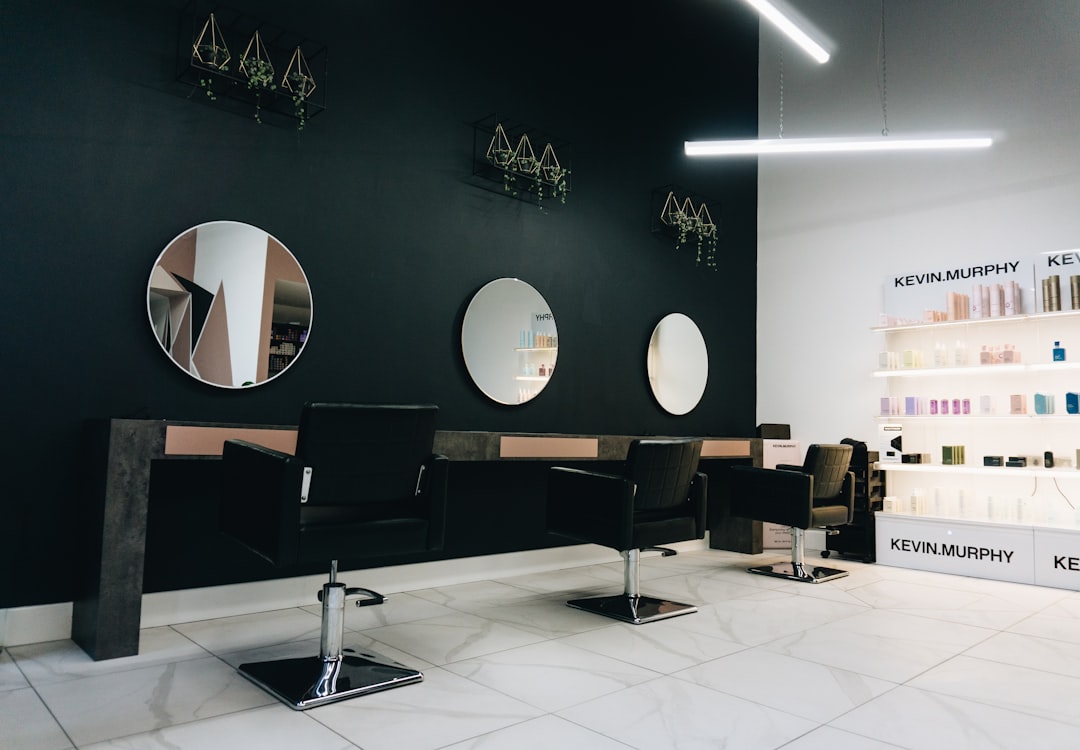
Hair care brands and salons succeed with digital advertising by matching ad formats to buyer intent and journey stage. Customizing campaigns for each audience segment leads to higher engagement and better ROI, while a one-size-fits-all approach often wastes budget and dilutes messaging.
Consistency across creative and messaging in all campaign types is crucial. When each channel is coordinated and informed by unified data, hair care brands can move beyond generic Google Ads for salons and deliver highly targeted, personalized experiences that accelerate results across the digital marketing funnel.
Growth in hair care advertising demands a forward-thinking approach that identifies untapped demand and aligns every campaign asset. B2B teams can achieve this by blending vertical targeting, advanced analytics, and personalized content delivery to drive measurable pipeline expansion.
Disconnected campaigns cause friction and reduce ROI. A unified approach—combining granular audience identification, intent-driven targeting, and cross-channel engagement—creates a foundation for scalable, predictable growth in hair care PPC campaigns. This method not only addresses common gaps found in generic targeting strategies but also ensures every dollar spent moves prospects closer to becoming loyal customers.
Audience segmentation is essential for hair care brands and salons aiming to turn generalized campaigns into meaningful customer experiences. By tailoring outreach to unique behaviors and interests, companies can improve engagement rates and significantly increase the efficiency of their digital marketing for hair care.
Modern platforms allow marketers to translate these insights directly into Google Ads strategies for beauty and hair salons. One analysis in Google Ads Strategy explores how precisely mapped ad groups can boost campaign performance, ensuring every ad experience reflects the prospect’s needs and motivations. Seamlessly connecting enriched audience data with Google Ads ensures timely, personalized ad delivery, while CRM integration guarantees all engagement and conversions are tracked back to their original source.
Audience segmentation, when combined with the latest advancements in data unification and intent-based targeting, delivers a measurable lift in both personalization and performance for hair care advertising and online advertising for salons.
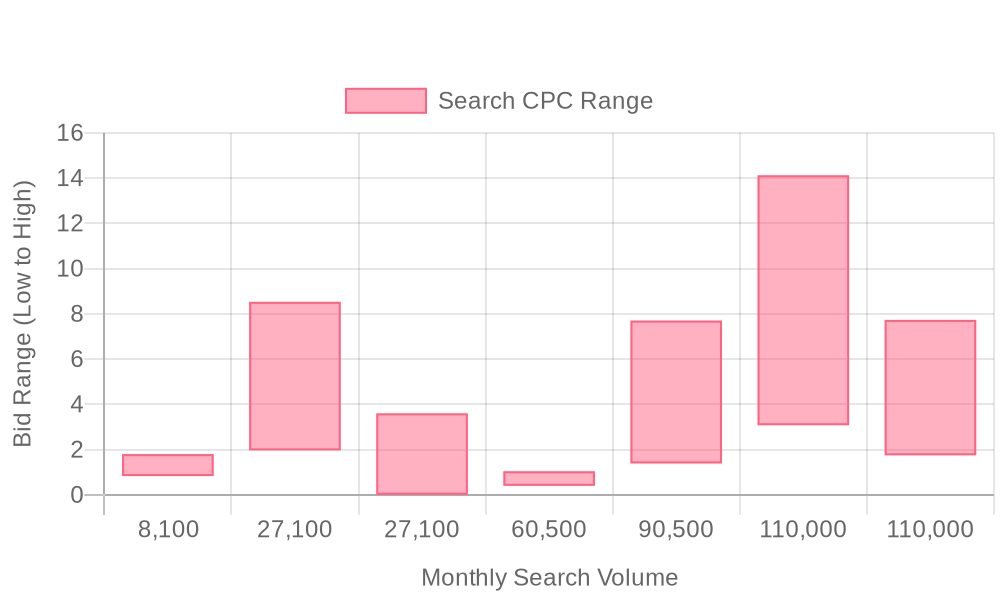
| Industry | Keyword | Monthly Search Volume | Competition Level | Low Bid | High Bid |
| Hair Care | virtue hair products | 8100 | HIGH | 0.83 | 1.8 |
| Hair Care | hair care | 27100 | HIGH | 1.97 | 8.53 |
| Hair Care | prose hair | 27100 | HIGH | 0.01 | 3.6 |
| Hair Care | wow hair products | 60500 | HIGH | 0.4 | 1.04 |
| Hair Care | curly hair products | 90500 | HIGH | 1.39 | 7.7 |
| Hair Care | hair loss treatment | 110000 | LOW | 3.08 | 14.12 |
| Hair Care | hair growth products | 110000 | HIGH | 1.75 | 7.73 |
Capturing high-intent traffic is essential for hair care brands and salons competing in a saturated digital marketplace. Strategic keyword targeting ensures your ads reach buyers precisely when they seek product solutions or local services, yielding better conversion rates and more efficient spend than untargeted campaigns.
A tailored keyword strategy begins with terms reflecting buyer action and commercial intent. For hair care product promotions using Google Ads, focus on terms like "best hair care products online," "hair serum sale," or "buy sulfate-free shampoo." These connect shoppers looking to purchase, not just browse, and enable your campaigns to compete where ROI is highest. Sona’s unified data approach lets you move beyond anonymous search queries by identifying the companies and individuals most likely to convert, so you can segment and prioritize spend on the most promising leads, rather than wasting budget on broad traffic.
Seasonality also drives spikes in demand for services and products, especially around events, holidays, and weather changes. Mining terms such as "seasonal Google Ads campaigns," "winter hair treatment specials," or "summer frizz control service" ensures your ads surface during these critical revenue windows. Panoramata Trends provides a deeper look at this trend, highlighting how time-sensitive keyword strategies can help brands capture short-lived, high-conversion opportunities.
For niche offerings, such as mobile hairstyling or at-home treatments, specificity is key. Targeting phrases like "mobile hairstyling ads" and "on-demand hair stylist near me" captures high-value, low-competition traffic. Solutions such as Sona Audiences support dynamic segmentation, allowing you to automatically refresh and expand your keyword and audience lists as leads progress through the funnel, syncing enriched data into your Google Ads account and CRM for seamless retargeting and nurture.
Smart bidding strategies amplify your campaign’s efficiency. By integrating advanced conversion tracking, you can attribute both online and offline conversions, helping you evaluate true ROI across every keyword and campaign. For more insights on boosting paid search effectiveness, check out our guide on Boosting Google ROAS. This holistic approach to hair care PPC campaigns moves the needle beyond vanity metrics, focusing your digital marketing for hair care on bottom-line impact.
Join results-focused teams combining Sona Platform automation with advanced Google Ads strategies to scale lead generation

Connect your existing CRM

Free Account Enrichment

No setup fees
No commitment required

Free consultation

Get a custom Google Ads roadmap for your business
Join results-focused teams using Sona Platform automation to activate unified sales and marketing data, maximize ROI on marketing investments, and drive measurable growth

Connect your existing CRM

Free Account Enrichment

No setup fees
No commitment required

Free consultation

Get a custom Google Ads roadmap for your business
Over 500+ auto detailing businesses trust our platform to grow their revenue
Join results-focused teams using Sona Platform automation to activate unified sales and marketing data, maximize ROI on marketing investments, and drive measurable growth

Connect your existing CRM

Free Account Enrichment

No setup fees
No commitment required

Free consultation

Get a custom Google Ads roadmap for your business
Over 500+ auto detailing businesses trust our platform to grow their revenue
Join results-focused teams using Sona Platform automation to activate unified sales and marketing data, maximize ROI on marketing investments, and drive measurable growth

Connect your existing CRM

Free Account Enrichment

No setup fees
No commitment required

Free consultation

Get a custom Google Ads roadmap for your business
Over 500+ auto detailing businesses trust our platform to grow their revenue
Join results-focused teams using Sona Platform automation to activate unified sales and marketing data, maximize ROI on marketing investments, and drive measurable growth

Connect your existing CRM

Free Account Enrichment

No setup fees
No commitment required

Free consultation

Get a custom Google Ads roadmap for your business
Over 500+ auto detailing businesses trust our platform to grow their revenue
Our team of experts can implement your Google Ads campaigns, then show you how Sona helps you manage exceptional campaign performance and sales.
Schedule your FREE 15-minute strategy sessionOur team of experts can help improve your demand generation strategy, and can show you how advanced attribution and data activation can help you realize more opportunities and improve sales performance.
Schedule your FREE 30-minute strategy sessionOur team of experts can help improve your demand generation strategy, and can show you how advanced attribution and data activation can help you realize more opportunities and improve sales performance.
Schedule your FREE 30-minute strategy sessionOur team of experts can help improve your demand generation strategy, and can show you how advanced attribution and data activation can help you realize more opportunities and improve sales performance.
Schedule your FREE 30-minute strategy sessionOur team of experts can help improve your demand generation strategy, and can show you how advanced attribution and data activation can help you realize more opportunities and improve sales performance.
Schedule your FREE 30-minute strategy session





Launch campaigns that generate qualified leads in 30 days or less.
